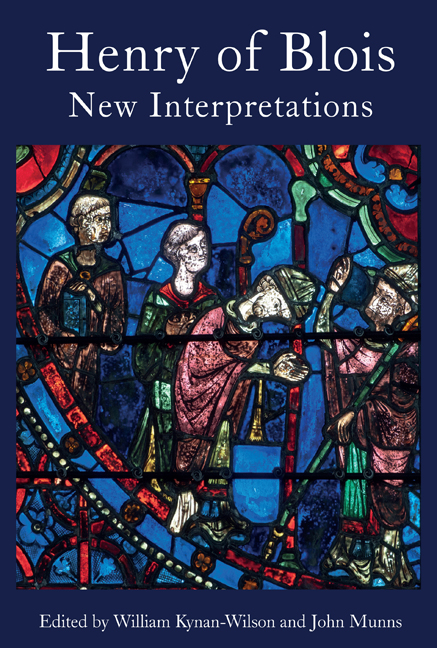Book contents
- Frontmatter
- Dedication
- Contents
- List of Illustrations
- List of Contributors
- Acknowledgements
- List of Abbreviations
- Genealogical Table: The Family Connections of Henry of Blois
- Introduction: Approaches to Henry of Blois
- 1 Causa Dei Et Ecclesie Cluniacensis: Henry of Blois and Cluny
- 2 Henry of Blois and His Legation in England
- 3 The Episcopal Colleagues of Henry of Blois
- 4 The Architectural Heritage of Bishop Henry of Blois at Winchester Cathedral
- 5 Wolvesey: Henry of Blois’ Domus Quasi palatium in Winchester
- 6 Bishop Henry’s Bible
- 7 Henry of Blois and the Construction of Roman Identity
- 8 Henry of Blois: Between Patronage and Representation in the Long Twelfth Century
- 9 The Last Days of Henry of Blois
- Timeline
- Bibliography
- Index
- Plate Section
1 - Causa Dei Et Ecclesie Cluniacensis: Henry of Blois and Cluny
Published online by Cambridge University Press: 09 February 2021
- Frontmatter
- Dedication
- Contents
- List of Illustrations
- List of Contributors
- Acknowledgements
- List of Abbreviations
- Genealogical Table: The Family Connections of Henry of Blois
- Introduction: Approaches to Henry of Blois
- 1 Causa Dei Et Ecclesie Cluniacensis: Henry of Blois and Cluny
- 2 Henry of Blois and His Legation in England
- 3 The Episcopal Colleagues of Henry of Blois
- 4 The Architectural Heritage of Bishop Henry of Blois at Winchester Cathedral
- 5 Wolvesey: Henry of Blois’ Domus Quasi palatium in Winchester
- 6 Bishop Henry’s Bible
- 7 Henry of Blois and the Construction of Roman Identity
- 8 Henry of Blois: Between Patronage and Representation in the Long Twelfth Century
- 9 The Last Days of Henry of Blois
- Timeline
- Bibliography
- Index
- Plate Section
Summary
Virtually everything known about Bishop Henry's early life, before he became abbot of Glastonbury in late 1126, derives largely from supposition and legend. It is known that he became ‘a monk of Cluny’, but precisely when, and at what age, remains unclear. How Henry made his way up the Cluniac cursus honorum is equally enigmatic. Once Henry became abbot of Glastonbury, and still more so after his elevation to the episcopate, it would be reasonable to expect his ties with Cluny to have become more tenuous. As it turns out, the contrary seems to be true. His endeavours on behalf of Cluny throughout his career seem to have been considerable. Available is a cryptic reference in his heavily-interpolated ‘will’ to Bishop Henry's early monastic career at Cluny itself, and in more than one of its cells, when he grants access (recursus) to the monks of Winchester ad Cluniacum et ad omnes cellas eiusdem ecclesie unde ego fui monachus. There is also the tradition in a late set of annals preserved in the Red Book of the Exchequer of his having once been prior of Montacute in Somerset, the only direct daughter house in England of Cluny proper, and, if the tradition reported by John Leland is accurate, a possible proto-Reading Abbey. Although there is a possible slot 1120 × 26 for him to have been prior there were plenty of grounds for fabricating a link between Montacute and the bishop.
The evidence is more certain in pointing to Henry spending substantial periods of time at Cluny itself, but for precisely how long remains a matter of interpretation and, on occasions, speculation. Even for so major a political figure as Bishop Henry, there remain striking gaps in his known itinerary. It would appear that he visited Cluny at least five times: the first occasion perhaps in 1134; a second in the winter of 1143/4 when en route for Rome, possibly returning at an unknown date before June 1145; a third probably in the early spring of 1149, again on the way back from Rome; a fourth, and more-lengthy, visit for approximately two years in mid-1155; and a final visit in 1160/1. This chapter will revisit the evidence for these trips as a means of exploring Henry's often overlooked relationship with Cluny.
- Type
- Chapter
- Information
- Henry of BloisNew Interpretations, pp. 26 - 46Publisher: Boydell & BrewerPrint publication year: 2021



